|
This story was originally published on Santé Magazine. “Every generation brings their touch, with their own history and own experience.” Thirty-six-year-old Delphine Nathalie Gardère is the fifth generation and newest CEO of Rhum Barbancourt, one of Haiti’s largest rum exporters. Delphine is the second woman in her family to attain the head position in the company’s history. Rhum Barbancourt is the oldest rum company in Haiti, founded by Dupré Barbancourt in 1862. In a virtual conversation with Delphine, she said, “My grandfather, a jurist/entrepreneur, brought the business from the back of the family house to the equivalent of the Great Plains of Haiti, which was a revolution. My father, an engineer, increased the production capacities. I come from a different background, with a business-oriented education, and work experience outside of the family business (investment banking and luxury goods marketing). Every generation brings their touch, with their own history and own experience.” Rum is made world-wide, but the Caribbean is probably the best-known area for production. It is believed that the first distillation of rum dates back to the 17th century on sugar cane plantations in the Caribbean, most specifically Barbados. The plantation workers discovered that molasses fermented into alcohol. Haiti is located in the Caribbean and is the western part of Hispaniola, bordering the Dominican Republic. Rum is a distilled liquor made from sugar cane by-products such as sugar cane juice, sugar cane syrup, or molasses. Typically after the sugar cane is cut, it is taken to the mill and fed into a crusher. This process extracts the sugar cane juice from the fibrous pulp. At this point, the sugar cane juice can be fermented and distilled or cooked down into a syrup for fermentation and distillation. The last option is to process the sugar cane juice into molasses. Fermentation, distillation, and barrel-aging vary from one distillery to another. However, most rums are aged and blended with other batches from the distillery or blended with rums of different ages. Rum is available in many styles and flavors, from sipping rums to cocktail mixers to sweet, spicy, and herbal. In 1862, Dupré Barbancourt used sugar cane juice and applied the traditional French distillation method of double distillation, usually reserved for the very finest cognacs. He aged the rum in oak barrels from Limousin, France, as practiced in cognac production in his native Charente. Dupré passed away in 1907, leaving no heirs. His wife, Nathalie Gardère, and her nephew Paul managed the company until her passing, and then Paul took over. During this time, the distillery was located in Port au Prince. Only a limited quantity of rum was produced and sold, with the older aged rum reserved solely for family and friends. In 1946, Paul’s son, Jean Gardère, took over the business, initiating its modernization. And by 1949, Rhum Barbancourt relocated the distillery to the “heart of the sugar cane fields” of Domaine Barbancourt. By 1952, the company had transformed from a small cottage industry to an international exporter. Jean passed away in 1990, and fourth-generation Thierry Gardère took the helm. He upheld the commitment to quality, fine natural ingredients, and the unique cognac-based production process. Thierry passed away in 2017, passing the baton to his daughter, Delphine. Delphine talked about growing up with the backdrop of the distillery and her “ah-hah” moment of wanting to be a part of it. Delphine: “Growing up in Haiti was very particular. I was born in the 1980s, and by the 1990s, Haiti was under embargo. So my mother and I moved to Jamaica, where I learned English over the summer so I could attend school. My father at the time remained in Haiti. I remember as a child it being a very intense time. My father was the only one of his brothers and sisters to choose to move back to Haiti and work for Barbancourt. He was the one “holding the fort” in times of uncertainty, and he always had a strong sense of duty towards the employees, which they still admire. Several periods shaped our family history (end of the dictatorship, the departure of Aristide in 2004, Haiti earthquake). I have a lot of admiration for the courage, determination, and resilience he had, not only as my father but also as a CEO. This is what always keeps me going in difficult times. The family business was never something that was forced upon me and I slowly became involved in it. I first realized how “cool” it was when I went to high school in Paris. We had a presentation on career day from L’Oréal, where I discovered business strategy, marketing, packaging, etc. On this day, it really clicked for me that I wanted to go to business school. This was when things started.” I asked Delphine to tell me about Barbancourt’s production process. Delphine: “Today, Barbancourt employs 500 people and works with 3000 farmers in a co-op manner. Only 20% of our sugar cane comes from our lands; 80% is sourced from local farmers. It is at the core of our value chain. Our brand’s DNA is rooted in aged rums, and our Haitian Heritage makes our products unique in terms of positioning. Our products are made from sugar cane juice, but we are not an AOC Agricole Rum, as we are not French. (Rhum Agricole is the French term for sugar cane juice rum) We do not use molasses, so we are not English or Hispanic in terms of Rum. This trickles through our production process, which is unique and gives a rum that can be viewed as light, smooth, and with no added sugar or caramel.” I received two samples of Rhum Barbancourt for review, and I tasted both rums neat. Rhum Barbancourt Reserve Speciale, 5 Star Aged 8 Years
This is a noteworthy “sipping” rum that would most certainly add character to a light rum cocktail. Double distilled and aged for eight years in French oak. It is slightly dry and smooth. The nose offers caramel, vanilla, candied orange, spice, and a touch of ethanol. A surprising palate is reminiscent of brandy with notes of smokey toast, toffee, vanilla, and dried fruit that linger on a long finish. Alcohol: 43% 86 Proof SRP: $25-$30 Rhum Barbancourt Estate Reserve, Aged 15 Years This is a rich and elegant sipping rum. Butterscotch, toast, baking spice, and orange peel aromas set the stage for this complex and creamy rum. The palate offers caramelized sugar, charred oak, candied fruit, orange peel, and a long finish of spice notes, and a touch of dark chocolate. It had my palate begging for another sip Alcohol: 43% 86 Proof SRP: $50-$55 Before we said our virtual good-byes, I had a few more questions for Delphine. Delphine, please tell me about your interest in Women’s Empowerment. Delphine: “I live in Haiti and have two young daughters. I would feel like a fraud saying that the road leading up to this was easy. Inside and outside of my role at Barbancourt, I would like to use my voice to help other women. I recently went to dinner with men where I spent three hours being mansplained and manterrupted. It shows that there’s still a lot to be done in the area of Women’s Empowerment. This is my most recent example of things that need to change. On a larger scale, campaigns like “Me Too” that happened in the US are things that don’t exist here. Victims of abuse are often left confused, misunderstood, with no voice, and no one to talk to, in a country that doesn’t have the infrastructure for this.” As CEO and fifth generation of the company, what is your vision for the future? Delphine: I’m very humbled by the history and legacy of our family business. My role as the CEO of a family business is to grow and maintain the company for future generations. On a more personal level, my goal is to expand the fame of Rhum Barbancourt, increasing brand recognition through International development and the launch of new products. My professional background is deeply rooted in luxury consumer goods and brand strategic management, so I am looking forward to seeing Barbancourt grow and be the International Ambassador Haiti deserves.” And, I am looking forward to following Delphine’s journey and enjoying more products from Rhum Barbancourt. Until next time... Cheers! Penny To leave a comment or if you have an inquiry, please contact me at [email protected] This story was originally published on Santé Magazine. There are many interpretations and symbolisms throughout the world concerning the dragonfly. In some cultures, it represents transformation and exemplifies the light and joy we should be embracing. In other cultures, the dragonfly signifies good luck and is perceived as being magical. In some parts of the world, it is believed that if you encounter a dragonfly, positive transformation is on the way, and you are about to emerge forever changed and much wiser. The dragonfly has a short life of approximately six months, and in some cultures, it represents that one must live life to its fullest. For me, dragonflies are magical and have played an important role in my life for many years. In fact, I have one tattooed on my ankle! But that is another story. So, what does all of this have to do with wine? It begins with a talented winemaker and entrepreneur, a beautiful bottle and label, and of course, the wine! Piera Martellozzo is an established winemaker and entrepreneur with three generations and over a century of history behind her. In 1899 Piera’s grandfather, Giovanni, founded Winery Piera Martellozzo in Padua province, located in northern Italy’s Veneto wine region. Piera’s father, Mario, is credited for developing the winery. In 1992, Mario passed the baton and entrusted Piera with managing the family’s small wine estate. Twenty-nine years later, under the guidance and tenacity of Piera, the winery has grown and expanded to include premium vineyards in Friuli Venezia Giulia, Veneto, and Trentino. With a focus on indigenous grapes, high-quality vineyards, and sustainability, including an organic wine range introduced in 1998, Piera has stood behind her mission to produce quality wines. She focuses on blending traditional production methods with acknowledgment of contemporary times and the future. Piera’s emphasis was initially on the production of Prosecco, but she eventually expanded her repertoire to include a more diverse “wine” menu. Her expansion included Friuli Venezia Giulia, a wine region known for its white wine production. In San Quirino in Pordenone province, she purchased a comprehensive winery, which is now home base. Through a virtual conversation, I asked Piera to share her story behind the inception of the Blu Giovello brand and the dragonfly’s symbolism. Piera: “Blu Giovello brand came to life 25 years ago from a four-hands project between our winery and our US importer, with whom we are still working! His expertise in the US market and our contribution of wine and ideas allowed us to develop a very successful brand. What we wanted to convey is a symbol of Italian style, made in Italy. Speaking of the single details, the origin of the name Giovello comes from the combination of the Italian words Giovane (young) and Bello (beautiful). The flying dragonfly is a symbol of harmony and prosperity. I wanted to put all the lightness, joy, and elegance of the dragonfly as an invitation to celebrate life and freedom from conventions. Blu refers to the wine’s origins. The blue color of the bottle refers to one of Italy’s typical colors, reminding us of the intense color of the sky and the waves of the Mediterranean Sea.” The brand’s wines have increased by 35% over the last five years and 90,000 cases sold worldwide. In addition to the Pinot Grigio DOC and Prosecco DOC Frizzante that I received, the Blue Giovello line also includes Prosecco DOC Extra Dry Spumante, Prosecco Rosé Sparkling, a still Rosé, and a still and sparkling Moscato. Reviews Blu Giovello Pinot Grigio DOC Delle Venezie
The grapes for this wine are 100% Pinot Grigio and are sourced from vineyards at 656 ft. above sea level. Delle Venezie is widely known for its production of light and crisp Pinot Grigio. Fluctuation in temperature between day and night adds to the development of aromatics in the skin. And the breezy and cool climate coming from the Alps help to maintain fresh acidity in the wines. Aromas: Citrus, pear, and a hint of floral Palate: Tart apples, melon, and a touch of white stone fruit. It is refreshing, crisp, and light. Serve with soft cheese, grilled chicken, or seafood. Alcohol: 12% SRP: $9.99 Piera said, “It is simply a must-have!” Blu Giovello Prosecco DOC Frizzante This wine is made with 100% Glera grapes sourced from the hills between the Dolomites and Venice in the Prosecco DOC area of production. The vineyards are at 1312 ft. above sea level. Situated between the Adriatic Sea and the Dolomites, the vineyards enjoy a unique microclimate that contributes to this wine’s characteristic flavors. The Charmat method is used for production, with the second fermentation taking place in stainless steel tanks for about one month. Aromas: Floral and fruit with apples and citrus Palate: Fine bubbles, peach, lemon zest, apple, and toast with a hint of minerality and crisp acidity. Serve as an aperitif or with light fare. Alcohol: 11% SRP: $11.99 Piera said, “It is the flagship of Italian sparkling wine!” Before Piera and I said our virtual good-byes, I asked her how climate change and Covid have impacted her and the challenges she might be facing in the vineyards and winery. Piera on climate change: Climate change is affecting all of us. We were among the first wineries to embrace a sustainable approach. We have been investing for more than twenty years in sustainable viticulture, believing in its huge potential: avoiding chemicals as much as possible, respecting the land and the vine. We were among the first in Italy to invest in a green productive process; we have always embraced technology that will enable us to preserve each wine’s typical features, such as using microfiltration. Furthermore, over the years, we have installed a photovoltaic system that allows us to produce almost all the energy we need in the production processes. We have created a water treatment plant that allows us to depurate the wastewater coming from the production process so that it can be used again, and we have chosen to use lighter bottles. Our sustainable approach also involves packaging. When possible, we use recycled materials.” Piera on Covid: “Working with both the on- and off-trade channels, we were able to close 2020 at the same level as 2019. We have seen an increase in sales on the off-trade channel and monopolies (Canada and Sweden) and an inevitable decrease in the on-trade sales. We embraced all the challenges requested in order to offer the best safeguard conditions for all our team. We provided masks and made sure there was enough space for everybody to carry out their work in a totally safe environment, and we adopted home working for all those who could work from home. The winery is the people, they are the beating heart of it, and we have to preserve it.” Piera also spoke about the future. “A lot has been done already, but we still have much to do to keep up with the best green standards. The winery aims to keep prioritizing this aspect through investments, granting both wine quality and the sustainability of production processes that respect the environment and the people involved. We give thanks to what the land offers, and we owe her the greatest respect.” With spring around the corner, these are delightful and light wines to enjoy while sitting outside and watching the dance of the dragonflies! Until next time... Cheers! Penina To leave a comment or if you have an inquiry, please contact me at [email protected] This story was originally published on Santé Magazine. In its simplest terms, fortified wine is a wine in which a distilled spirit is added. It can be enjoyed neat, as an aperitif, digestif, or added to cocktails. A wide range of fortified wines is produced around the world. Some of the more well-known are Port, Sherry, Marsala, Madeira, and Moscatel de Setúbal. Vermouth is also a fortified wine that falls into the sub-category of aromatized wines. Aromatized wines are flavored with spices, herbs, or natural flavorings. Fortified wines are available in many styles ranging from dry to sweet. And each style tends to have specific rules and regulations set by the country, region, or appellation it comes from. Specifications might include types of base wine allowed, aging minimums and styles, and what spirits are permissible. I recently received two bottles of Pineau des Charente that drink beautifully on their own or as an added dimension to creative cocktails. Pineau des Charente is exclusively produced in the Charente, Charente-Maritime, and Dordogne départments of France’s Cognac region. According to Comité National du Pineau des Charentes, Pineau is made with fresh grape juice must from the current year’s vintage and Cognac eau-de-vie – Cognac distilled for at least one year. Eau-de-vie translates to “water of life” in French. This blend is then aged in French oak barrels. If the wine is aged for five years, then the Pineau earns the designation of vieux (old), and if aged for ten years, it will receive the title of tres vieux (very old). Pineau is produced in white, rosé, and red styles, with an alcohol content that ranges from 16-22%. White Pineau is usually made from the traditional Cognac grapes, Ugni Blanc, Colombard, and Folle Blanche. It is aged for at least 18 months, including 12 months in French oak barrels. Red and Rosé Pineau are made from Cabernet Sauvignon, Cabernet Franc, and Merlot, and aged for 12 months, eight months in French oak barrels. Vallein Tercinier Pineau des Charentes This family has been producing Cognac for five generations, dating back to 1850. Recipes have been handed down from one generation to the next with “the focus on creating the most pleasurable experience in the glass.” The grape juice must for this wine is 75% Ugni Blanc and 25% Montils, and the blend is aged for three years in French oak barrels. A lovely golden color opens to aromas of citrus, sweet fruit, and dried raisins. This smooth wine fills the palate with soft fruit, citrus, honeysuckle, and a long finish of almonds and candied lemon. Alcohol: 17.5% SRP: $28 Château De Beaulon White Pineau des Charentes Château De Beaulon is a family-owned estate dating back to 1712. As it states on the back of the bottle, “Château De Beaulon Pineau is produced today as it has been for generations. Faithful to the oldest family traditions passed on through the centuries.” The grape juice must is made from Semillion and Sauvignon Blanc. This fortified wine is gently matured in French oak barrels for five years, giving it the classification vieux (old). The color is soft amber with heady aromas of floral notes, apricot, and mandarin. It is fresh and smooth, with vanilla notes, dried fruit, honey, and nuts on the palate. Alcohol: 18% SRP: $20 I love drinking Pineau neat, but I am looking forward to making Pineau des Charentes’ Signature cocktail recipes created by some very talented bartenders. You can find the recipes at https://pineauacademy.com
These fortified wines are intense, elegant, and made with love. They are gently sweet, allowing the palate to enjoy all of its nuances, including acidity and subtle oxidation. They are complex but so easy to drink! Until next time… Cheers! Penina To leave a comment or if you have an inquiry, please contact me at [email protected] Blame it on the snow and frigid temperatures, but I’ve been popping the cork on many delicious red wine wines of late. As you may know from past posts, I enjoy white, rosé, and sparkling wine all year round. However, this winter, I’ve been indulging my palate with some very expressive red wines. Here are eight reviews of red wines that will surely have your palate singing! Australia McGuigan Wines, ‘The Plan’ Cabernet Sauvignon 2017 McGuigan Wines is a major wine producer in Australia. Their family roots date back to 1880 in Hunter Valley with Perc McGuigan, who set the standard for future generations. Grapes for this 100% Cabernet are sourced from top-quality vineyards in South Eastern Australia, including McLaren Vale, Langhorne Creek, and Barossa Valley. The fruit is harvested at night, and after fermentation, it is matured in stainless steel tanks and oak before final blending. Aromas of blackberry, cherry, chocolate, and hints of baking spice segue onto the palate with a hint of cranberry and herbs. This fruit-driven wine has refreshing acidity and firm tannins with hints of warm toasted oak. It is a steal at this price! Serve with roasts, grilled tuna, and dark chocolate desserts. Alcohol: 13.5% SRP: $10.99 Italy Bertani Valpolicella DOC 2018 Bertani has been producing wine for over 150 years and has an impressive 200 hectares of vineyards in the most ideal areas of Verona province in the Veneto region, which is famous worldwide for wines such as Valpolicella, Soave, and Amarone. This wine is a blend of 80% Corvina Veronese and 20% Rondinella. Grapes are harvested from the heart of the Valpolicella Classico area and the Valpantena vineyards near the municipality of Grezzana. The wine is aged for eight months in concrete vats covered with glass bricks to allow slow and gradual aging. It is then further aged for a minimum of three months in the bottle. Aromas of plum, sour cherry, red berries, pepper, and baking spice continue onto the palate. This wine has nice acidity and a good balance between juicy fruity and savory. Sour cherry and raspberry linger on the finish. Pair with hearty stews, braised meat, pasta, and semi-aged cheese. Alcohol: 12% SRP: $16.49 Spain Bela, Ribera del Duero DO 2017 One of Rioja’s most iconic wine producers, CVNE (pronounced coo-nay), is an acronym for Compania Vinicola del Norte des Espana. CVNE has expanded its territory to include a 182-acre estate in Ribera del Duero in northern Spain with the focus of bringing their Rioja elegance to the rugged Ribera del Duero region. Grapes for this 100% Tempranillo are sourced from Ribera del Duero region. The climate here leans toward continental with a complexity of soils throughout the region. This wine is aged for six months in American and French, new and one-year-old oak barrels. Intense aromas of dark fruit, floral, baking spice, and a touch of earth set the stage for this terroir-driven wine. The palate is layered with dark berries, dark cherry, plum, spice, anise, and a hint of minerality. Vanilla and pepper linger on a long finish. This is a graceful wine with soft tannins and brimming with character. It is an easy wine to pair with a wide range of cuisine. Alcohol: 14% SRP: $19 Portugal Esporão Reserva Red 2016 Alentejo wine region is situated in the southern half of Portugal and covers one-third of the country. It is one of Portugal’s largest wine production areas. Herdade Do Esporão, whose history dates back over 750 years ago, first introduced this wine in 1985. It is a blend of Aragonez, Trincadeira, Cabernet Sauvignon, and Alicante Bouschet. Grapes are sourced from vineyards with soil of granite/schist origin and clay/loam structure. This wine is aged for 12 months in American oak (60%) and French oak (40%) barrels, and then an additional six months in the bottle. It begins with a rich bouquet of cherry, raspberry, blackberry, plum, and baking spice. The palate is entertained with lush dark fruit jam, spice, and a hint of plum. Smooth tannins and a long berry finish add to the richness of this wine. Pair with grilled or braised meat and game, stews, tapas, and codfish. Alcohol: 14.5% SRP: $24 Sicily Donnafugata Sherazade Sicilia DOC 2018 The Rallo family owns the iconic Donnafugata, and their family history of winemaking dates back to 1851. They have several wineries and over 405 hectares of vineyards located throughout Sicily, including historic aging cellars at their Marsala winery. Nero d’Avola is an indigenous grape that is considered Sicily’s most important red wine grape. Sherazade is 100% Nero d’Avola and the grapes are sourced from Donnafugata’s Contessa Entellina Estate and nearby vineyards, which are located in the southwestern part of Sicily. The wine is aged for about four months in tanks and then a minimum of three months in the bottle. Delectable aromas of violets, red fruit, and spice open to a lovely palate of cherry, plum, berries, and spice. Well-balanced tannins and acid add to the character of this fresh and lively wine, along with a touch of pepper and tartness on a long finish. Serve with mature cheese, pasta and red sauce, seared tuna, and calamari. Alcohol: 13% SRP: $25 California Au Contraire Pinot Noir, Sonoma Coast 2019 Sonoma County’s Au Contraire winery was inspired by Taub Family vineyards company founder, David S. Taub. The grapes for this Pinot Noir are sourced from top Sonoma Coast vineyards, from Sebastopol to the Fort Ross Seaview AVA. Although these are warmer vineyard sites, they sit above the fog line generating a cool-climate style Pinot Noir with highly concentrated fruit flavors. The wine is aged for 12 months in French oak barrels, 35% new. Juicy aromas of cherry, red berries, plum, and a hint of floral segue onto the palate with strawberry and cherry leading the parade of flavors. This is a silky wine with lots of ripe fruit and bright acidity. Serve with roasted meat, fowl, spicy Asian cuisine, and soft cheese. Alcohol: 14.2% SRP: $26.99 Argentina Bodegas Salentein Numina Gran Corte 2016 Bodegas Salentein is located in the Uco Valley of Mendoza, Argentina. Many of their vineyards are situated at some of the highest elevations in the world. This privately-owned estate was established in the late 1990s and boasts almost 5000 acres, of which 1,124 acres are planted to vine. The Numina Gran Corte is a blend of 61% Malbec, 21% Cabernet Sauvignon, 8% Merlot, 7% Petit Verdot, and 3% Cabernet Franc. Grapes are hand-harvested from small selected plots. Fermentation takes place in 7000-liter oak casks and then aged for 16 months in French oak barrels. This wine opens with subtle violet aromas, plum, dark berries, spice, and a trace of vanilla. The palate offers a fresh and elegant layering of blackberry, raspberry, plum, baking spice, and a touch of earth. This is a beautifully integrated blend with a silky mouthfeel and a long finish. Pair with grilled meat, seared tuna, hearty stews, and casseroles. Alcohol: 13.5% SRP: $40.99 France Jean-Luc Colombo Cornas “Terres Brûlées” 2018 Jean-Luc Colombo winery is located in the northern appellation of Cornas in the Rhône Valley, France. Cornas is the smallest appellation in the Rhône Valley, consisting of approximately 325 acres, and is dedicated to producing only red wine from the Syrah grape. The Mediterranean climate and decomposed granite soils contribute to the richness and character of these wines. Terres Brûlées means “burnt earth”, which refers to the long hot days here that are balanced by the cool nights. Grapes are hand-harvested from 30+ -year-old vines. The wine is aged for 21 months in oak barrels (10% new, 90% one-to-five-year old barrels). This 100% Syrah wine has enticing aromas of dark cherry, dark berries, dark plum, spice, and hints of baking spice. The palate is rich with blackberry, plum, and black cherry, reminiscent of exotic jam. Notes of vanilla, cocoa, spice, and a trace of minerality linger on a long finish. A truly noteworthy wine! Pair with white meat, game, seared tuna, and hearty stews.
Alcohol: 14.5% SRP: $63.99 No matter what time of year,, these wines will pair beautifully with any season! Until next time… Cheers! Penina To leave a comment or if you have an inquiry, please contact me at [email protected] It seems that every weather forecast of late is either snow, freezing rain, ice, or frozen tundra temperatures. So one can imagine my delight when I received a one-way ticket to a magical island where the sun always shines, and tropical breezes soothe the soul. My virtual airline ticket also included some delightful island cocktails in a can for easy transport to the beach. Biza calls it “a vacation in a can.” Biza is a brand developed by a group of friends aimed at catering to the millennial generation. (Those who fall in the range of 23 to 38 in 2019). However, Biza has also captured the attention of those beyond this group. These ready-to-drink vodka-based cocktails in a can are NOT “flavored malt beverages.” Biza cocktails are made with premium vodka produced from winter wheat and corn from southern Idaho. The drinks are naturally sugar and yeast-free. A touch of carbonation is added to give a little oomph to the cocktail. These sparkling cocktails are available in four flavors: Passion Fruit Peach, Coconut Pineapple, Pomegranate Vanilla, and Mango Jalapeño. My vacation package included all except for the Passion Fruit Peach. Coconut Pineapple As listed on the can, the ingredients are Premium Vodka, Sparkling Water, Natural Flavors & colored with Beta Carotene. Aromas of coconut and pineapple segue onto the palate with the slightest effervescence and minimum sweetness. This is absolutely delicious! Where’s my beach chair? Alcohol: 6% SRP: $12.00/4-pack Mango Jalapeño As listed on the can, the ingredients are Premium Vodka, Sparkling Water, Natural Flavors & colored with Beta Carotene. Aromas of mango and other tropical notes tease the nose and set the stage for a surprise explosion of spice in the mouth. Yes, the jalapeño makes its presence known and blends well with the fruit. Minimum sweetness and light effervescence add to this light and refreshing cocktail. Alcohol: 6% SRP: $12.00/4-pack Pomegranate Vanilla As listed on the can, the ingredients are Premium Vodka, Sparkling Water, Natural Flavors and colored with Fruit and Vegetable juice. Strawberry and a hint of cherry are present on the nose. Vanilla and pomegranate come through on the palate with a little more sweetness than I prefer in a cocktail. However, it is light and a perfect quaff for the day at the beach. Alcohol: 6% SRP: $12.00/4-pack For added entertainment, just scan the QR code on the back of the cans. It will redirect you to the Biza Spotify page for a delightful playlist that will surely have you moving! Relax, sip, listen, and enjoy this virtual vacation!
Until next time, Cheers! Penina To leave a comment or if you have an inquiry, please contact me at [email protected] This story was originally published on Santé Magazine. We all have rituals that we perform day in and day out without batting an eye. I kick start every morning with a ritual of pouring a cup of coffee and then crawling back into bed with it to peruse the news. Rituals can be as simple as a morning run, yoga meditation, telling your child a bedtime story, or prayers over a meal. Many of our rituals go beyond ourselves and transcend to our families, religion, spiritual practices, and holidays. With Covid lurking around every corner, many life rituals and daily routines have been disrupted and are now temporarily on hold. Many of us have established new rituals and routines to take their place. Breathing is something I always took for granted until Covid brought it to my attention. And now, one of my new daily rituals is 10 minutes of deep breathing exercises to strengthen my lungs and calm my soul. For others, it might be inventing new ways to celebrate rites of passage, or writing in a journal. Since getting together online has become the “new norm”, several of my friends and colleagues have established cocktail hour rituals. Of course, one of my favorite rituals that I can continue despite Covid is pouring a glass of wine or spirits at the end of the day and doing a big exhale! So, I was most delighted when I recently received a shipment of wines named Ritual! I love the name and how fitting for this new chapter we are living in. Ritual wines are produced from the Viñedos Veramonte organic estate. It is located in the extreme eastern end of Chile’s Casablanca Valley wine region. With respect to Chile’s other wine regions, Casablanca Valley is relatively new. The first vineyards were planted here in the 1980s during Chile’s revitalization of its viticulture industry. Casablanca Valley wine region is about 20 miles long from east to west and is close to the Pacific Ocean. The vineyards for Ritual wine benefit from the cool morning fog and cloud cover. In addition, the cool sea breezes of the Pacific Ocean alleviate the heat of the day. Soil composition is a combination of decomposed granite soil, with a top layer of red volcanic clay. This soil allows the vines to go deep and absorb minerality, which reflects in the wines. With hot days and cold nights and a lengthier ripening period, the white grapes have more time to develop more complexity, flavor and maintain a good balance of sugar and acidity. These are ideal growing conditions for cool climate wines, and Casablanca Valley is noted for producing outstanding Chardonnay and Sauvignon Blanc. Cool climate red grapes also do very well here, such as Pinot Noir and Syrah. Fortunately, Covid has not interrupted the winery’s rituals and organic practices from the vineyard to the winemaking process. To quote from their website, “Crafting fine wine is steeped in Ritual and grounded in terroir. We endeavor in creating beautiful wines that are a reflection of this special place. Ritual is a labor of love. It connects us to the land we farm, to healthy living soil, and to the daily rituals of artisanal winemaking.” All the vineyards of the Viñedos Veramonte estate have organic certifications. Using low-impact farming methods, they make their own compost from the stems and pomace gathered during harvest season and manure from local animals to promote a balanced and self-regulated ecosystem. Cover cropping and seeding are practiced for revitalizing the soils. Sheep are used to “mow the grass” and also function as natural fertilizers. Grapes are hand-harvested in small batches, and once in the winery, only native yeasts are used to obtain a” natural balance and greater purity”. Different containers are used in the winemaking process, each one adding a unique characteristic to the wines. Oak barrels are used for structure, concrete eggs for texture, stainless steel drums for freshness, and stainless steel tanks for aromatics. Winemaker Sofia Araya produces Chardonnay, Sauvignon Blanc, and Pinot Noir. These wines are aged in combinations of neutral oak, concrete eggs, and stainless steel tanks. Ritual Sauvignon Blanc 2019 30% of this wine is fermented in concrete eggs, 30% in neutral oak, and 40% in stainless steel tanks. The wine is then aged in each of its containers for eight to ten months, with each vessel contributing aromatics, flavors, and textures. This is a fresh and aromatic wine with aromas of floral, citrus, and white stone fruit that segue onto the palate with vibrant acidity, and hints of minerality. Citrus and nectarine linger on a long finish. Drink as an aperitif or pair with seafood, light pasta, and salads. Alcohol: 13.5% SRP: $19.99 Ritual Chardonnay 2018 This wine is fermented in 20% concrete eggs, 20% new 400-liter barrels, and 60% neutral oak. Amazing aromas of lemon curd, white stone fruit, and a touch of vanilla, spill onto the palate with a hint of oak. It is beautifully balanced with acidity and notes of salinity and minerality. This wine is fresh, lively, and elegant! Serve with cheese, light pasta, seafood, grilled fish, or chicken. Alcohol: 13.5% SRP: $20.99 Ritual Pinot Noir 2017 This wine is fermented with wild yeasts to enhance its depth, intensity, and complexity. It is aged for 11 months in French oak barrels, 20% new. From aroma to the palate, this wine delivers “fresh and juicy”. One is greeted with aromas of cherries, berries, and floral. The palate offers raspberry, strawberry, cherry, notes of integrated oak, and a silky smooth mouthfeel. This is a fresh, well-balanced, and expressive wine. Serve with seared tuna, pasta, fowl, and spicy Asian cuisine. Alcohol: 13.5% SRP: $20.99 In addition to the wines, I was gifted a “Rituals and Wellness” journal. Written on the cover are these words, “An Intentional Journal For Mindful Rituals & Wellness Intentions”. It is a perfect journal for an imperfect time. We are embarking on a new year that will surely bring more changes in our lives. We will find more new rituals, and hopefully, rediscover old ones again. Until next time… Cheers! Penina To leave a comment or if you have an inquiry, please contact me at [email protected] We’re just a few days away from Super Bowl Sunday. There is no doubt that most of us will be watching the game a little differently this year. Large Super Bowl parties, hanging out at sports bars, and even gathering with a few friends or relatives is not a safe bet right now. But that doesn’t mean we can’t enjoy the game! I have so many fond memories of Super Bowl Sundays spent with my youngest son. We had our food and drink traditions and always looked forward to lots of giggles and ongoing commentary of the game. This year it will be quite different. I will be gathering with people via video chat, texts, and telephone calls. My traditions might be on hold, but the enthusiasm and camaraderie with friends and family are still viable! My menu for Super Bowl will be downsized this year, but I do plan to treat myself to an old vintage wine! Normally, this post would include suggestions for wine and cocktails to pair with the food extravaganza when gathering with friends and family. But this year, my only advice is to enjoy yourself! Whether dining on healthy or carb-loaded food, drinking wine, spirits, or water, have fun! If by yourself, connect online and watch the game together! Have a very Happy Super Bowl Sunday! Stay Safe, Stay Home, and Be Well! Until next time…
Cheers! Penina To leave a comment or if you have an inquiry, please contact me at [email protected] Every now and then, I receive wine samples from producers that I have written about previously. They might be new vintages, new blends, or an introduction to a new brand. Because I always like to tell a story about the winery, history, the land, the winemaker, etc. along with my review, it can get a little repetitive. With that in mind, please select from the menu at right for a more in-depth look at Domaine Bousquet, Argentina’s largest exporter of organically grown wines. The winery is located in the Gualtallary Valley, situated high up in the Tupungato district of the Uco Valley. Altitudes here reach up to 5,249 ft. Domaine Bousquet has an impressive portfolio of wines that include their nicely priced Gaia collection. I have reviewed several wines from the Gaia line, but here are two new and noteworthy red wines from this collection. The label for these wines is a striking portrayal of Gaia, who in Greek mythology is the mother goddess presiding over the earth. It is a fitting name for wines produced from all organic grapes! Gaia Cabernet Franc 2018 This vintage is 100% Cabernet Franc. Grapes are hand-harvested from vineyards that sit at 4000 ft. altitude. The wine is aged in French oak for ten months. It is quite aromatic with notes of dark berries, plum, and floral. The palate offers blackberry, dark plum, pomegranate, spice, and a hint of minerality. Medium tannins and acidity round out this juicy wine. Serve with grilled meat, hearty stews, cheese, and chocolate desserts. Alcohol: 15% SRP: $20 Gaia Cabernet Sauvignon 2018
Grapes for this 100% Cabernet Sauvignon are hand-harvested from vineyards that sit at 4000 ft. altitude. This wine is aged in French oak between eight and ten months. Intense aromas of dark berries, dark cherry, vanilla, and a touch of minerality set the stage for this expressive wine. The palate offers red and black berries, dark plum, baking spice, and a hint of chocolate. This is another juicy wine with beautiful structure, smooth tannins, and a lengthy finish. Serve with grilled meat, seared tuna, hearty pasta, and cheese. Alcohol: 15% SRP: $20 Until next time… Cheers! Penina To leave a comment or if you have an inquiry, please contact me at [email protected] This isn’t my first story or review of wines from the diverse wine region of Alentejo. These expressive wines are impressive and never disappoint my palate. For those of you who are unfamiliar with the Alentejo wine region, here is a quick recap. Alentejo is situated in the southern half of Portugal and covers one-third of the country. This wine region is one of Portugal’s largest production areas. It is divided into eight sub-regions as seen on the map below. For the most part, Alentejo enjoys a typically Mediterranean climate with some Atlantic influence. However, the sub-region of Portalegre experiences much cooler temperatures due to its proximity to the mountains. The terrain throughout Alentejo is mostly flat with gently rolling hills, and the soil varies throughout its eight sub-regions. In fact, it has the most diverse soil of any region in Portugal. Interspersed amongst the mountains, hills, and valleys, one can find soil with clay, limestone, quartz, granite, schist, sandstone, and marble. Most of the soils are non-calcareous, meaning they are neutral or more acidic. Alentejo has 51,000 acres of planted vines that enjoy 3000 hours of sunshine annually. More than 80% of the grapes grown here are red, but whites are gaining momentum, especially Antão Vaz. The wines produced here come in a range of styles, influenced by the diversity of the climate and soil. For over 2000 years, blending has been a tradition for Alentejo winemakers. With over 250 indigenous grape varieties and 14 regional wine areas, Portugal rates as the highest density of native grapes per square mile in the entire world. Imagine the blending creativity winemakers have with all these varieties at hand. With so many grapes ripening at different times, winemakers have turned what might be considered a liability into an opportunity to create beautifully blended wines. Below are five samples of red blend-based wines from Alentejo. Herdade São Miguel Colheita Seleccionada Red 2017 This wine is produced by Casa Relvas located in the Evora sub-region. It is a blend of 50% Alicante Bouschet, 30% Touriga Nacional, 10% Syrah, and 10% Cabernet Sauvignon. 2017 was the third year of drought in Alentejo, but fortunately, due to the vines growing on clay and schist soil, they withstood the drought. Grapes are harvested in the evening when they are their most ripe. 50% of the wine was aged in French oak for four months. Lovely aromas of red and black fruits are inviting, with plum, raspberry, and spice thrown in. Aromas continue onto the palate with juicy dark cherry, blackberry, and a touch of herbs and earth. Bright acidity and firm tannins add to this beautifully blended wine. Alcohol: 13.5% SRP: $15 Adega De Borba Reserva Red 2015, DOC Alentejo Produced in the sub-region of Borba, this wine is a blend of 30% Trincadeira, 30% Alicante Bouschet, 20% Aragonez, and 20% Castelão. The grapes originate from old vines that grow in chalky-clay and schist. The blend is aged for 12 months in 3rd and 4th-year French oak and wooden barrels and another six months in the bottle. It opens with aromas that are reminiscent of rich dark jam, berries, and baking spice. The palate offers a wonderful balance of sweet and tart, with notes of sour cherry, plum, chocolate, and smooth tannins. Flavors linger on a long finish. Alcohol: 13.5% SRP: $18 Esporão Reserva Red 2016 Herdade Do Esporão first introduced this wine in 1985. It is a blend of Aragonez, Trincadeira, Cabernet Sauvignon, and Alicante Bouschet. Grapes are sourced from vineyards with soil of granite/schist origin and clay/loam structure. This wine is aged for 12 months in American oak (60%) and French oak (40%) barrels, and then an additional six months in the bottle. It begins with a rich bouquet of cherry, raspberry, blackberry, plum and baking spice. The palate is entertained with lush dark fruit jam, spice, and a hint of plum. Smooth tannins and a long berry finish add to the richness of this wine. Alcohol: 14.5% SRP: $24 Cartuxa, Tinto 2016, DOC Évora This is a historic winery with origins dating back to 1598. Carthusian monks who established the Santa Maria Scala Coeli Monastery were the first to make wine in Cartuxa. This wine is a blend of 40% Aragonez, 40% Alicante Bouschet and 20% Trincadeira. Grapes are sourced from vineyards with vines that average about 30-years of age, on soil of granite and schist. The wine is aged for 12 months in French oak barrels and then an additional nine months in the bottle. Heady aromas of floral, dark berries, earth, spice, and toasty notes segue onto the palate with a touch of cocoa. It is beautifully structured with fine tannins. Alcohol: 14% SRP: $25 Carmin Reguengos Garrafeira Dos Sócios 2014 Founded in 1971, the Cooperativa Agricola de Reguengos de Monsaraz is the largest winery in Alentejo. Vineyards for this elegant wine date back to the Middle Ages and surround the historic village of Monsaraz in the sub-region of Reguengos. 65% Alicante Bouschet, 20% Touriga Nacional and 15%Tinta Caiada make up the blend for this robust wine. It is aged for 14 months in French and American oak barrels. After aging, the wine is bottled and laid down for at least one year before release. This wine has a seductive bouquet of ripe plum, dark fruit, and spice that spills onto the palate. It is a richly textured wine with added notes of blackberry, black cherry, earth, and pepper. The finish is long and graceful, with smooth tannins and fine acidity.
Alcohol: 14.5% SRP: $48 All of these wines are beautiful blends representing the magic and artistry of the winemakers in Alentejo. The structure, complexity, and expressiveness are manifested in each bottle. Until next time… Cheers! Penina To leave a comment or if you have an inquiry, please contact me at [email protected] “It’s the friends we meet who help us appreciate the journey”. Mon Frère Winery Mon Frère means ‘my brother’ in French, and the Mon Frère Winery dedicates their three wines to special and rare friends who feel like family. Located in Napa, CA, the winery is a partnership between legendary winemaker, Tom Hinde and family-owned wine and spirits organization Palm Bay International. Tom Hinde, head winemaker, brings his 30+ years of knowledge and talent for California wines to the table. The winery sources the best quality grapes throughout California’s wine regions, selecting different clones of the same grape. For their Chardonnay, grapes are chosen and blended from the coastal region’s Lodi, Mendocino and Monterey vineyards. Pinot Noir is a blend of grapes from the Sonoma Coast, Santa Rita Hills, and the highlands of Santa Barbara and Santa Lucia. Mon Frère wanted to focus on making the Cabernet Sauvignon as versatile as possible. Grapes are sourced from vineyards in Napa, Sonoma, and Mendocino (coast) and blended with grapes from vineyards in Lodi and Paso Robles. I received a sample of the Cabernet Sauvignon, and now I can't wait to try their Pinot Noir and Chardonnay! Mon Frère Cabernet Sauvignon 2017 As stated above, the grapes are sourced from different vineyards and locations. The climate is a mixture of warmer Mediterranean areas and cooler coastal areas giving this wine a nice balance between structure, freshness, and fruit. Grapes are pressed and undergo fermentation separately. After they are blended, the wine ages in a mix of French oak (90%) and American oak (10% new). This wine is a beautiful and inviting garnet color. Juicy aromas of dark cherry, dark berries, baking spice, and toasty notes segue onto the palate. Rich, ripe fruit with plum, spice, and oak notes dance on the palate. Silky tannins contribute to the fine structure and expression of this wine. Pair with grilled meat, seared tuna, hearty pasta, and stews.
Alcohol: 13.9% SRP: $16.99 I will end this story with a quote from the back of the wine bottle. “At Mon Frère, French for “My Brother”, we think it’s important to hit the pause button occasionally to appreciate the cast of characters who brush you off, build you up and remind you to laugh! So whether you roll with rogues or saints, take a moment and raise a glass of Cabernet with the friends that make life’s crazy journey all worthwhile.” I’ll drink to that! Until next time… Cheers! Penina To leave a comment or if you have an inquiry, please contact me at [email protected] |
Categories
All
|
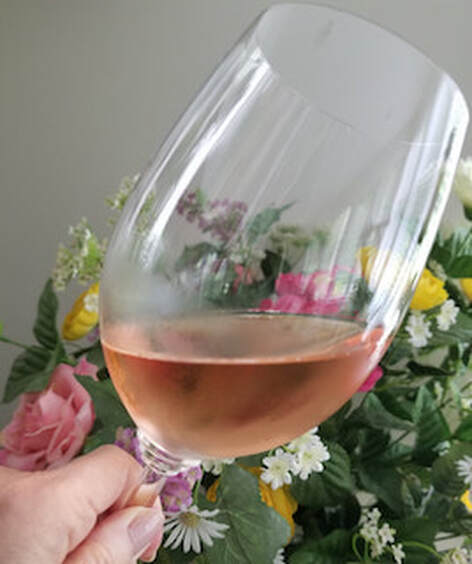
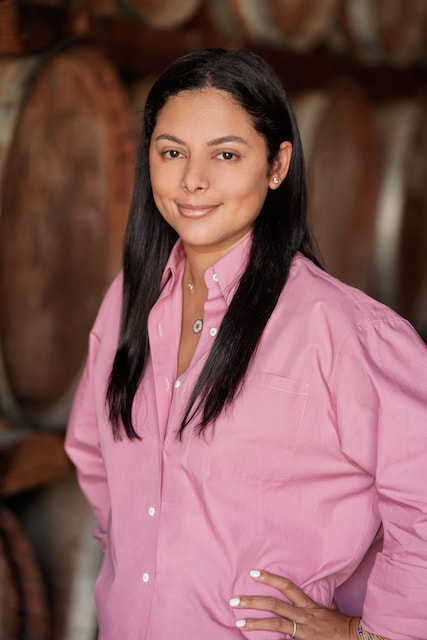
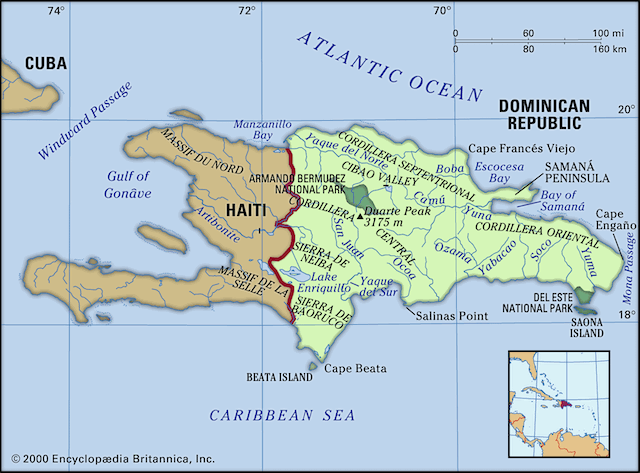
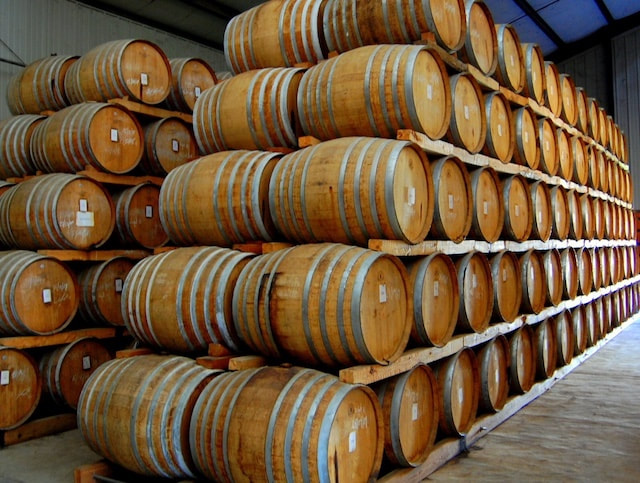
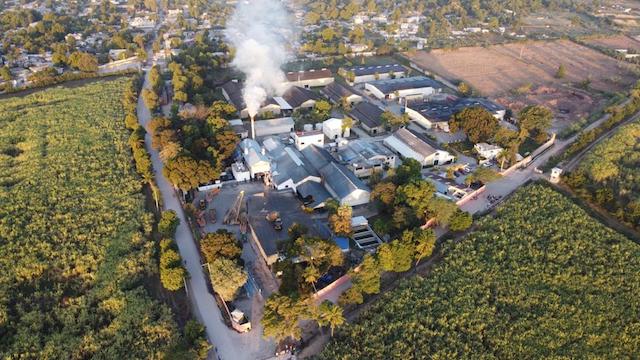
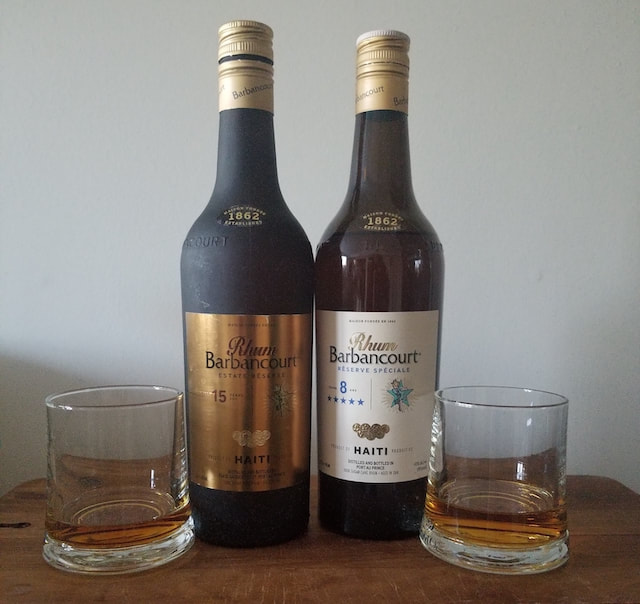
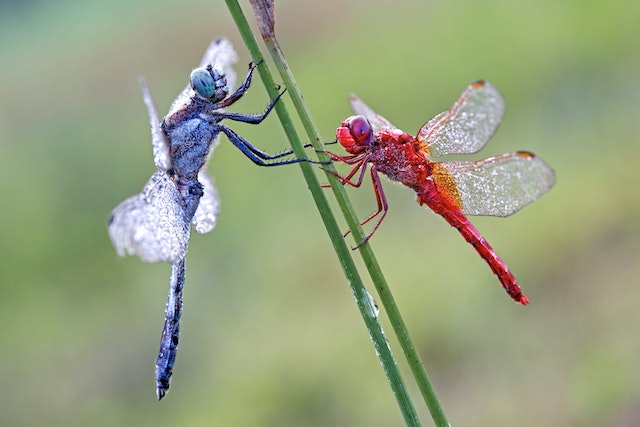
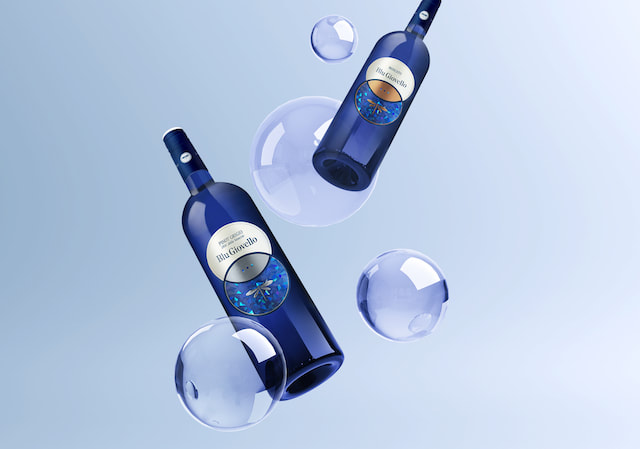
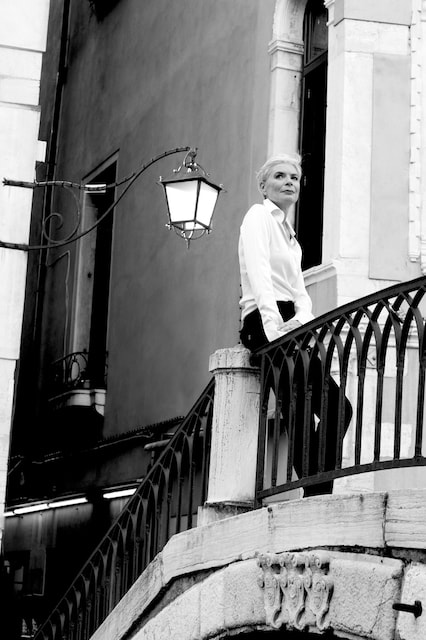
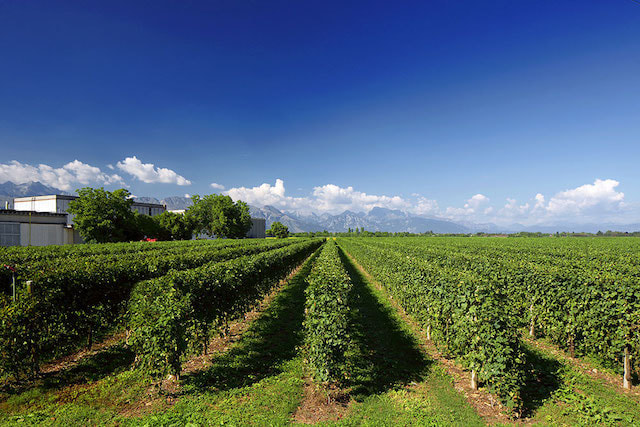
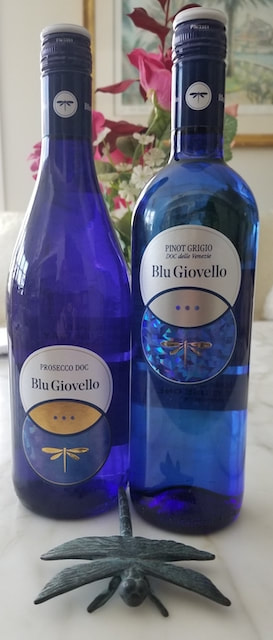
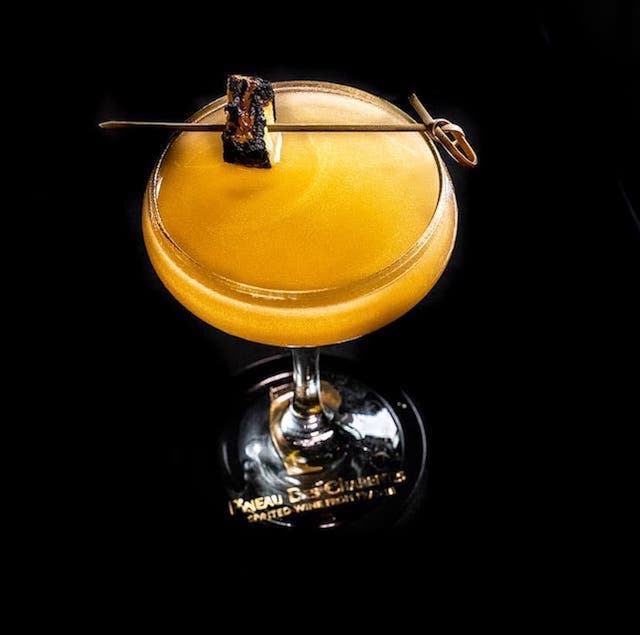
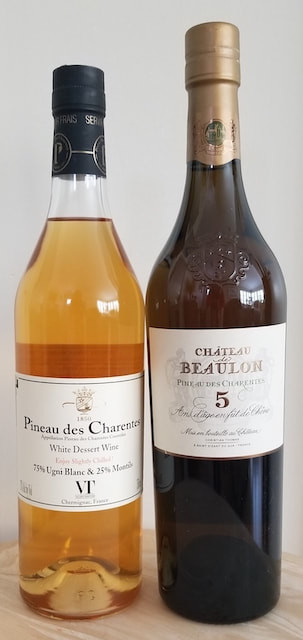
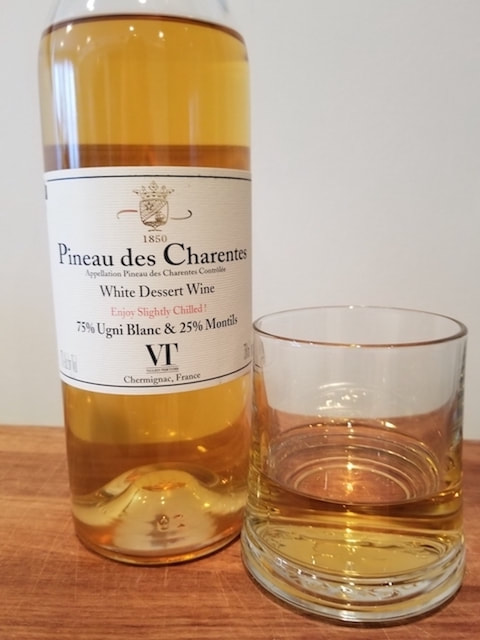

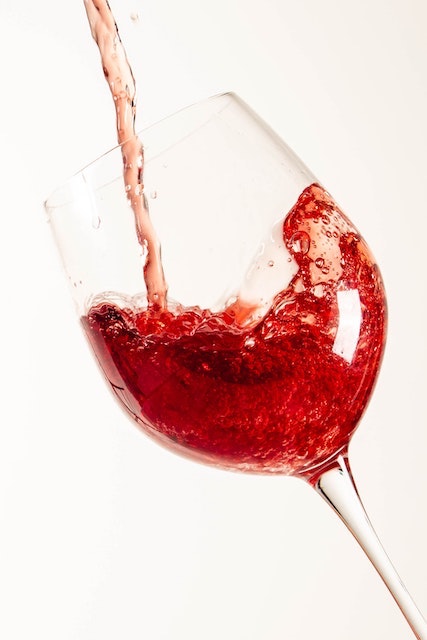
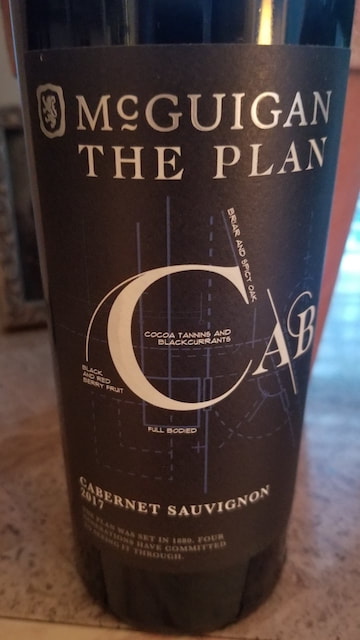
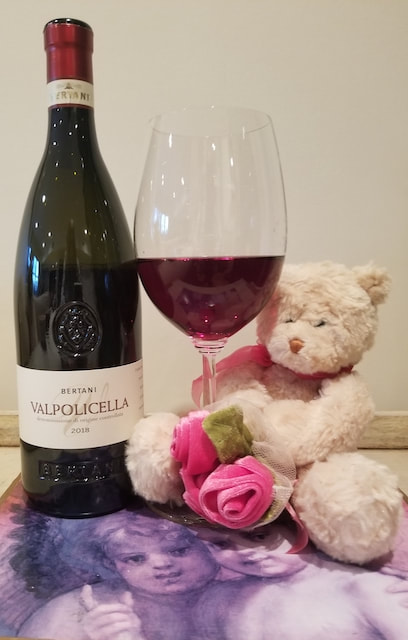

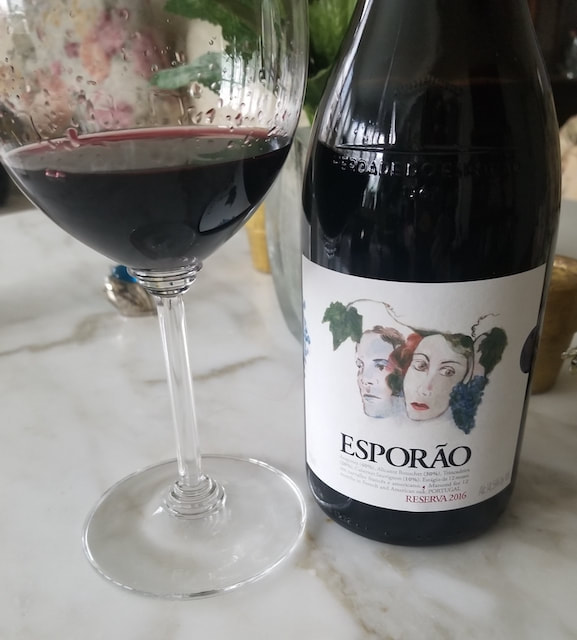

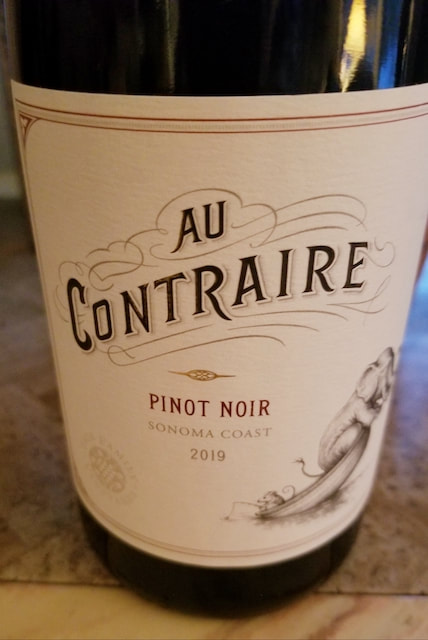


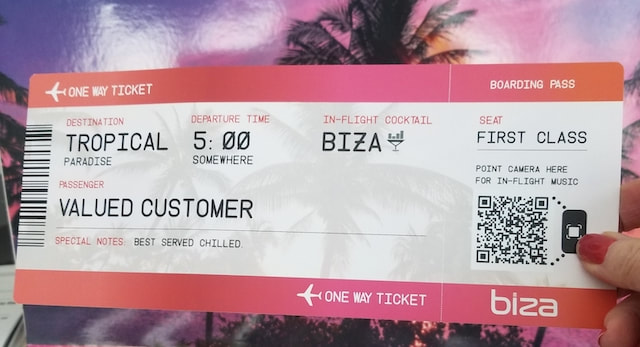

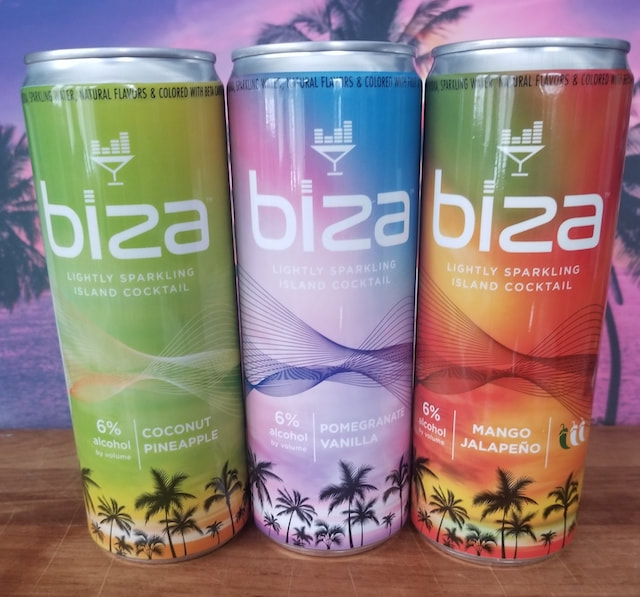
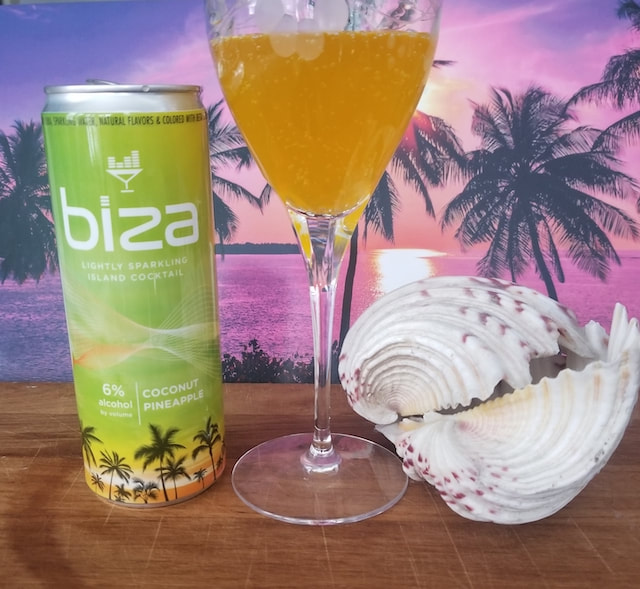
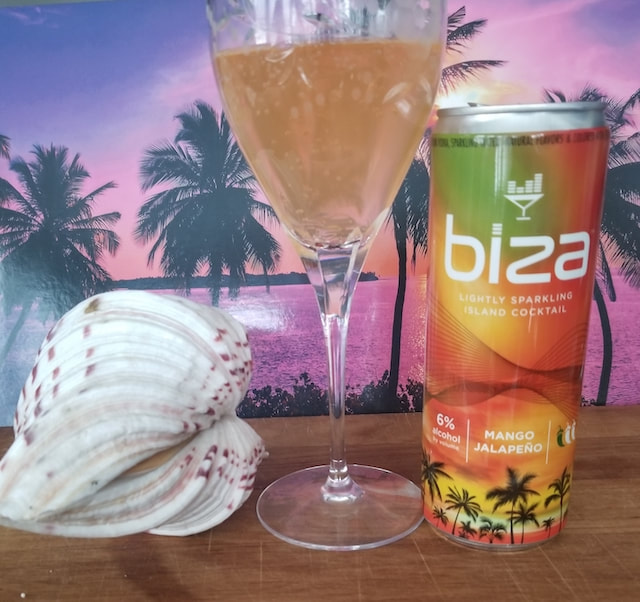

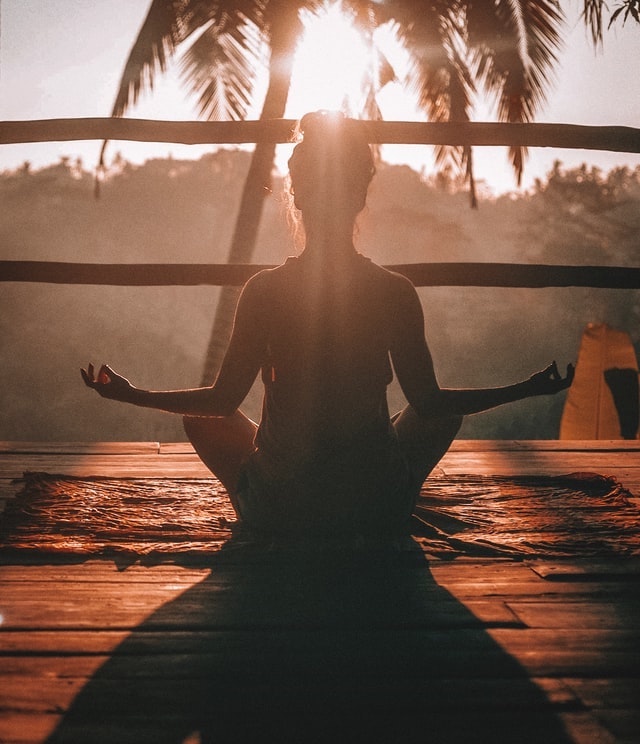
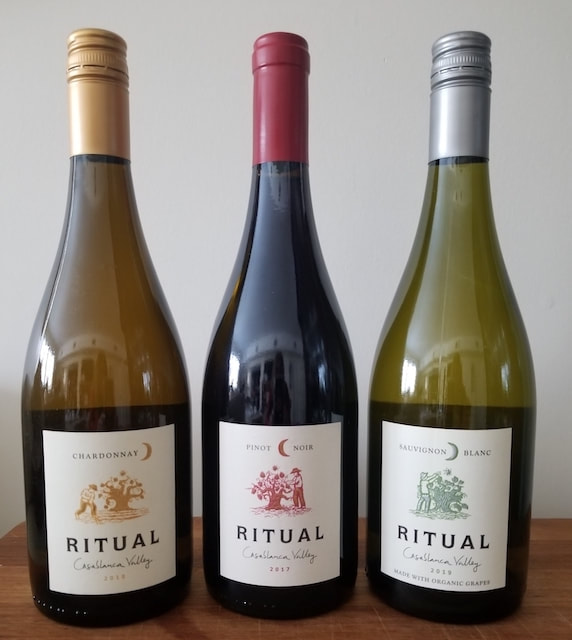
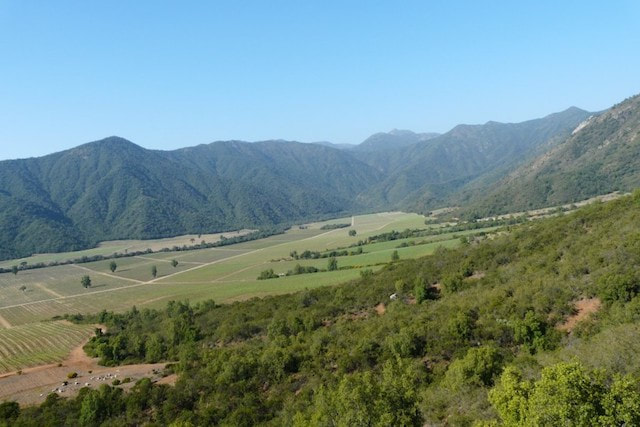
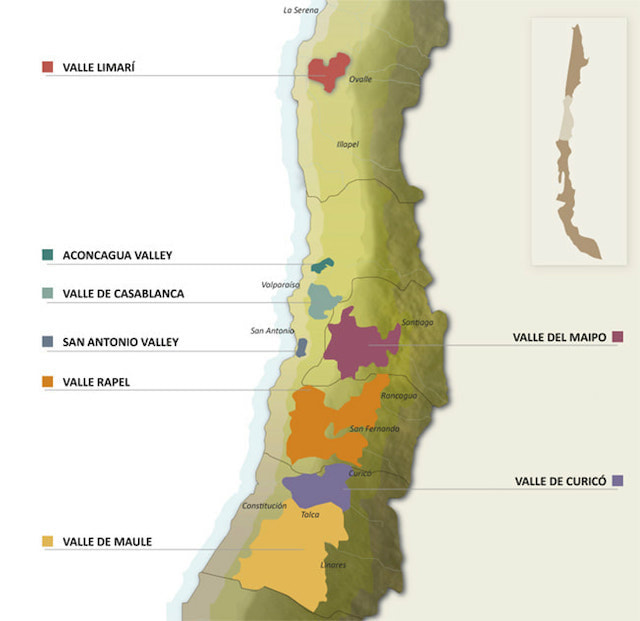
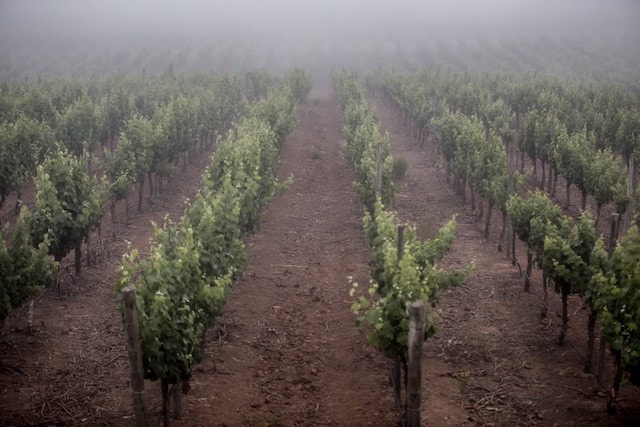
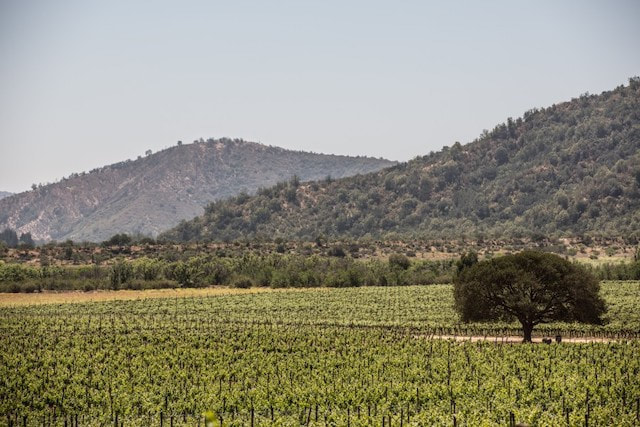

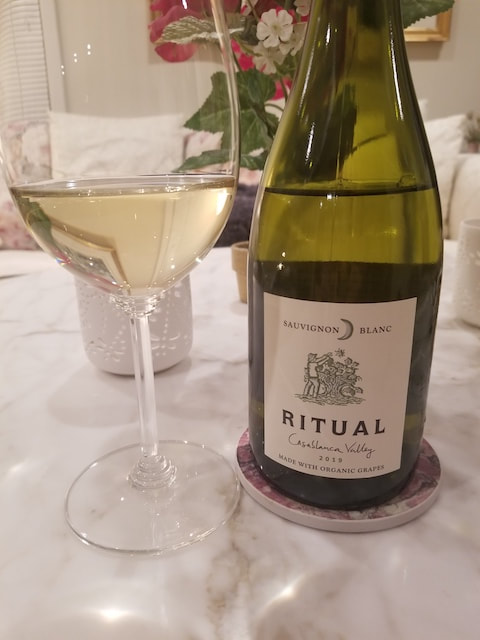
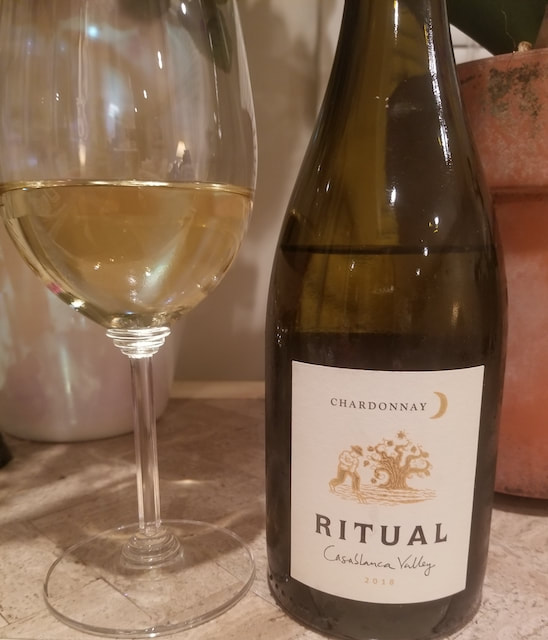
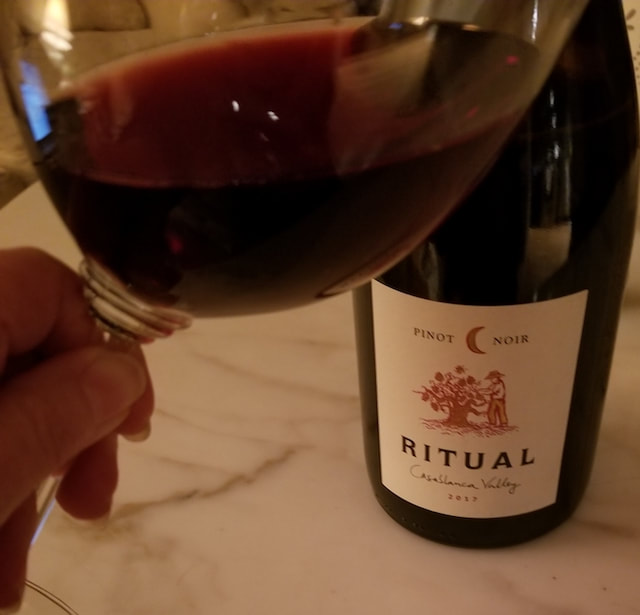
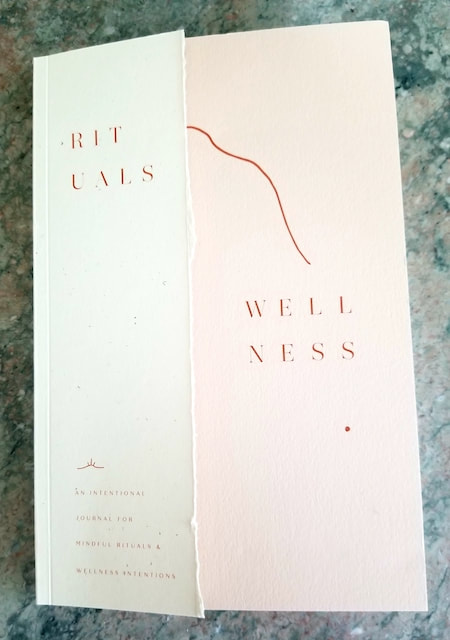
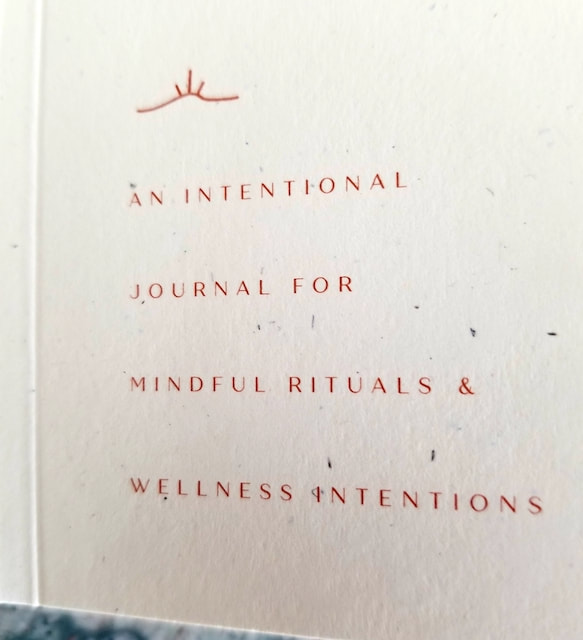
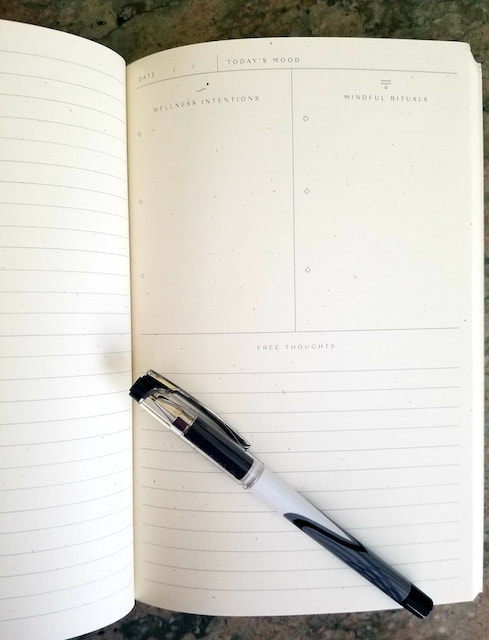
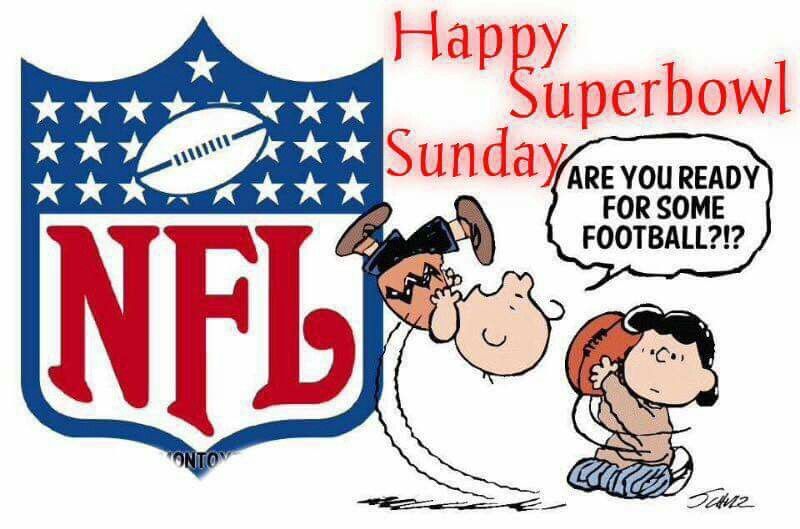
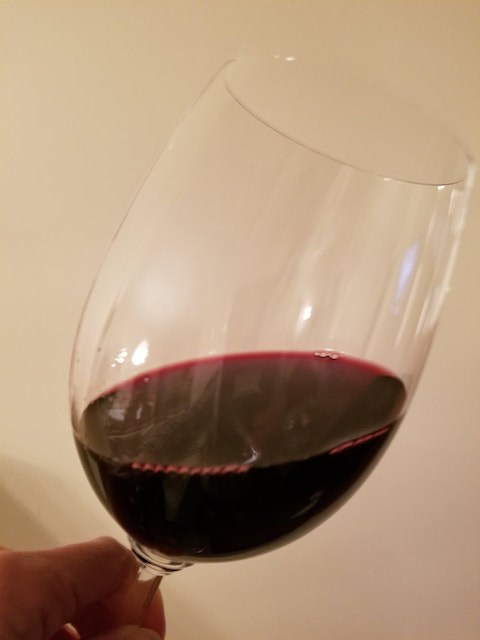
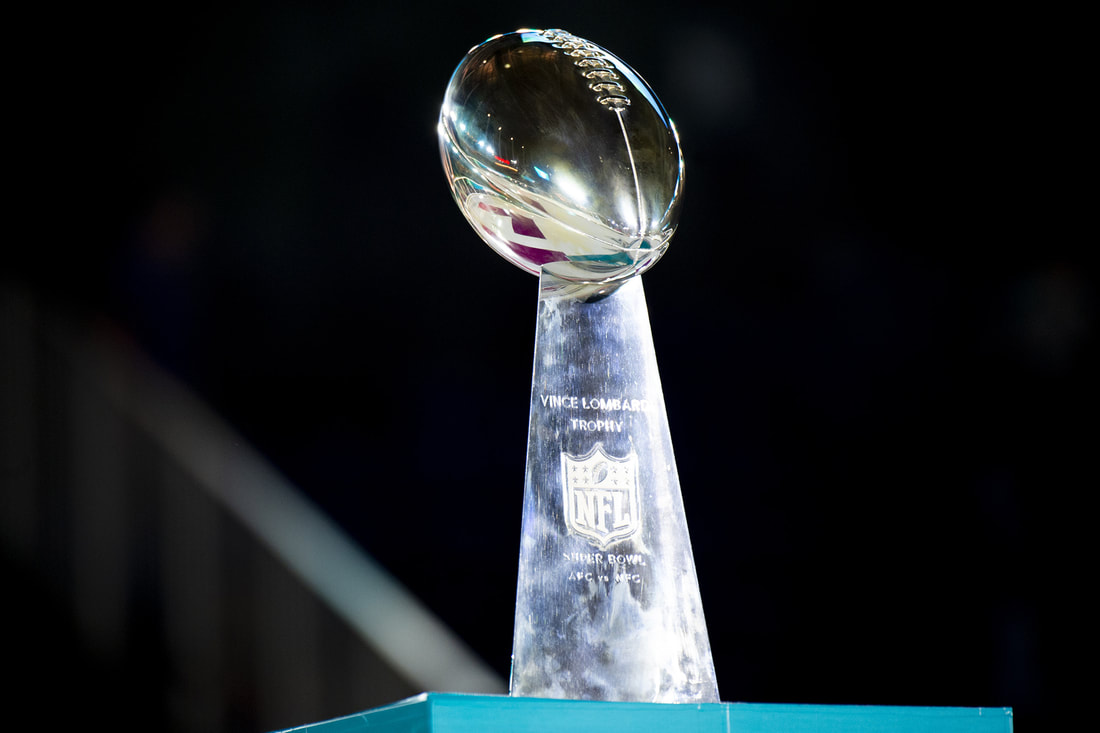
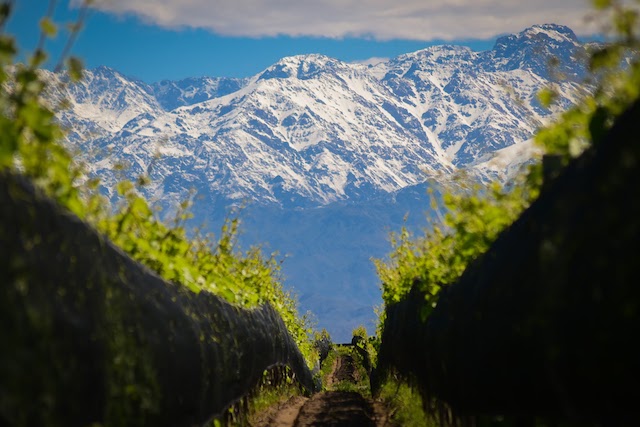
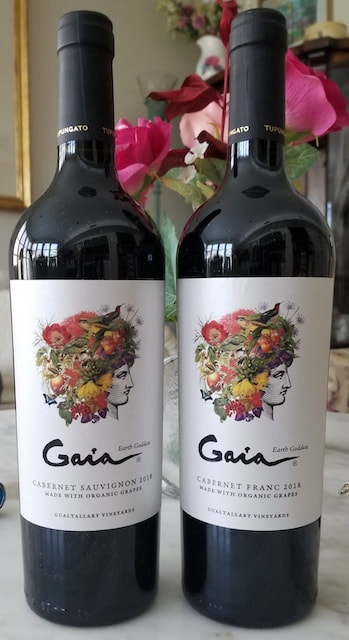
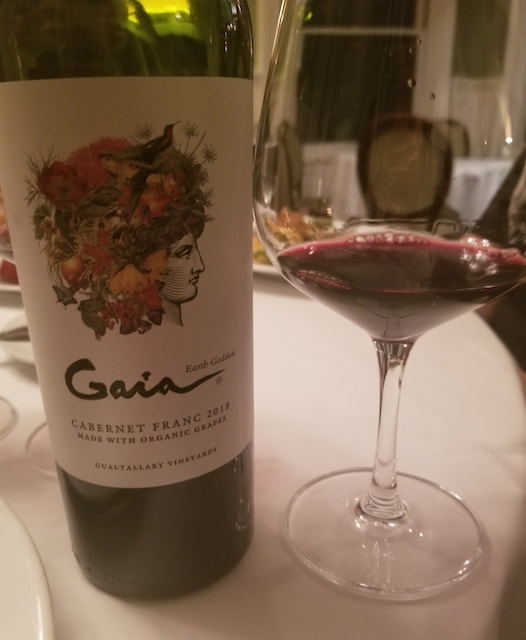

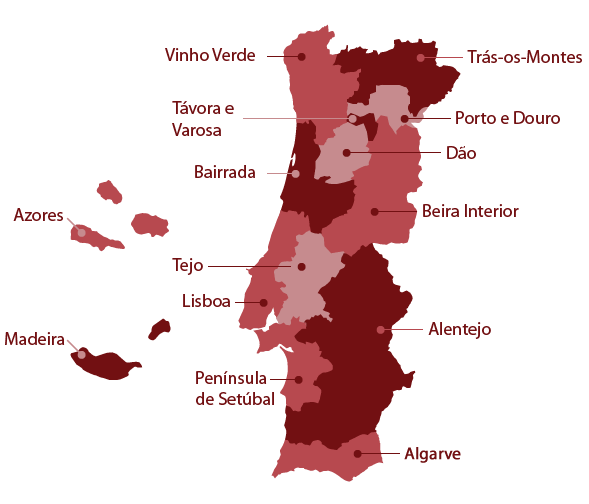



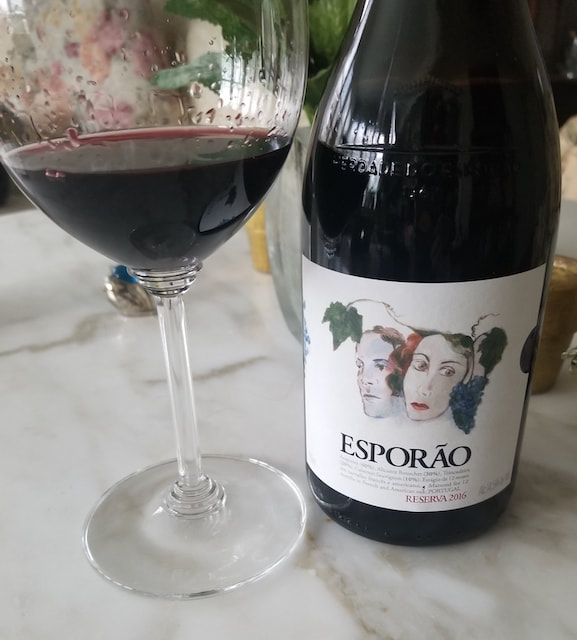

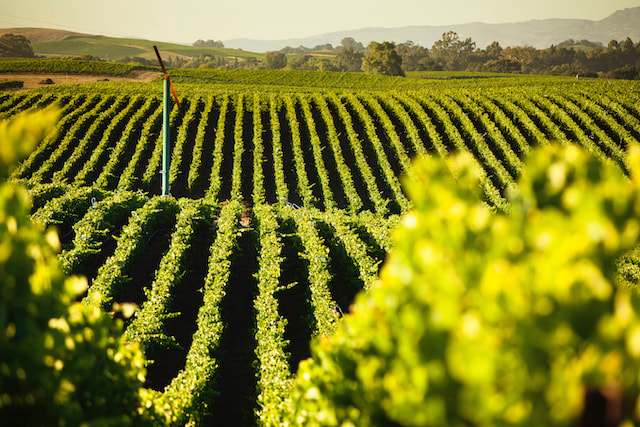
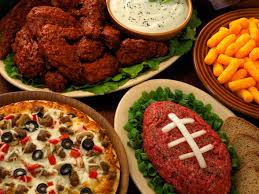
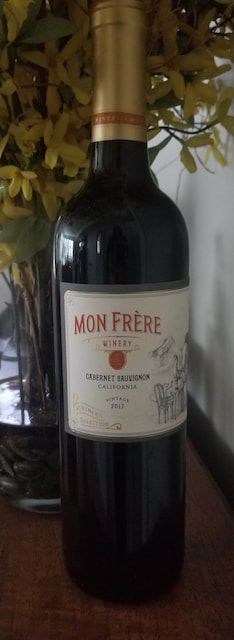
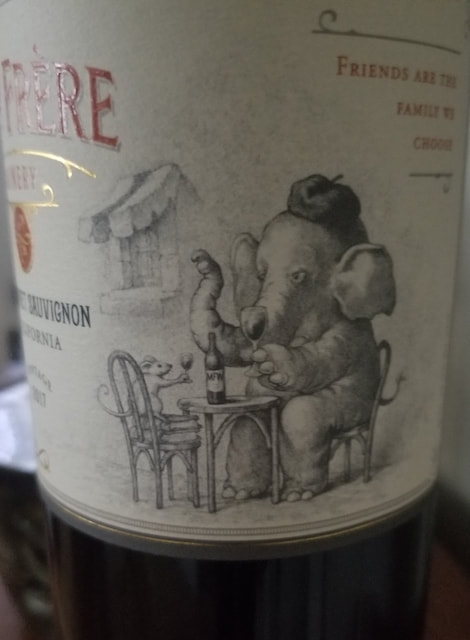
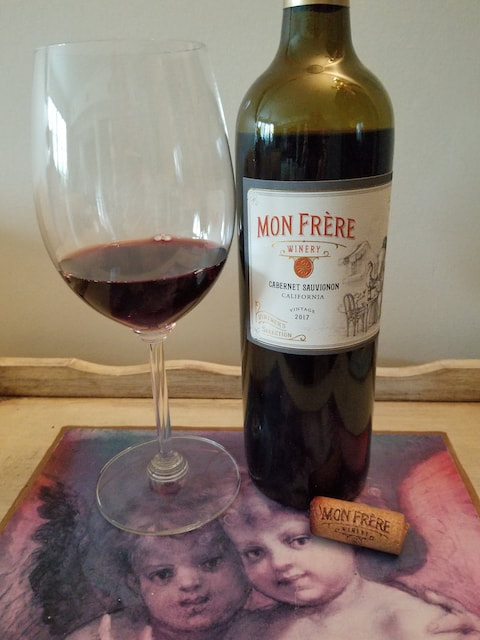
 RSS Feed
RSS Feed